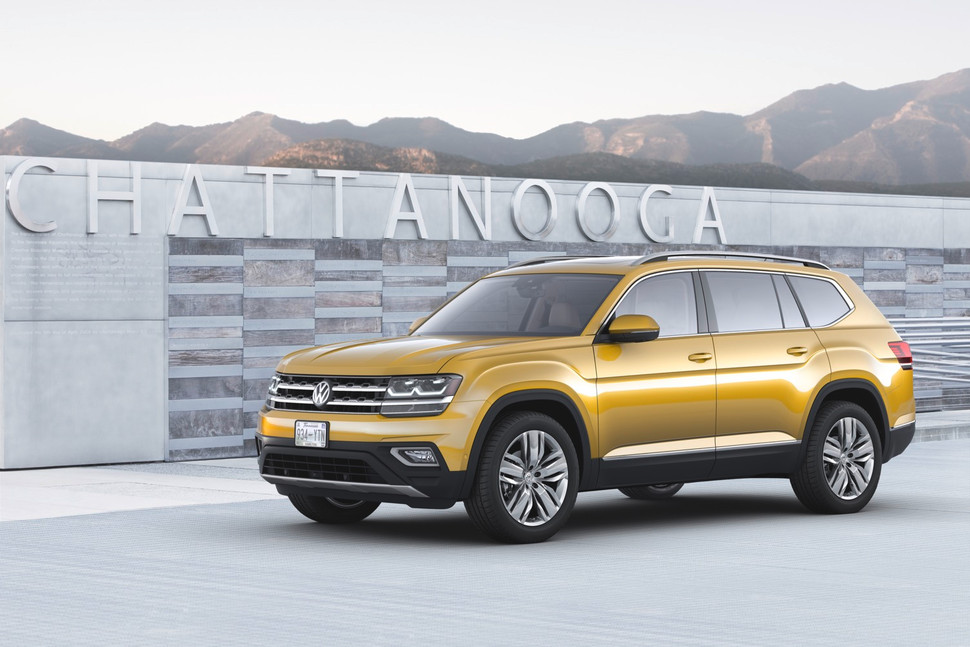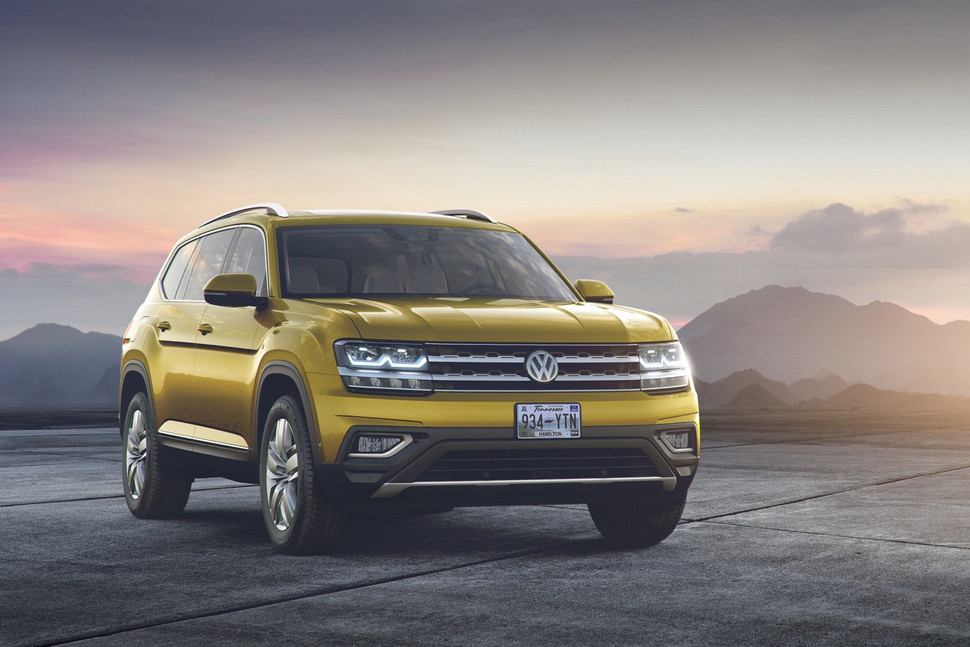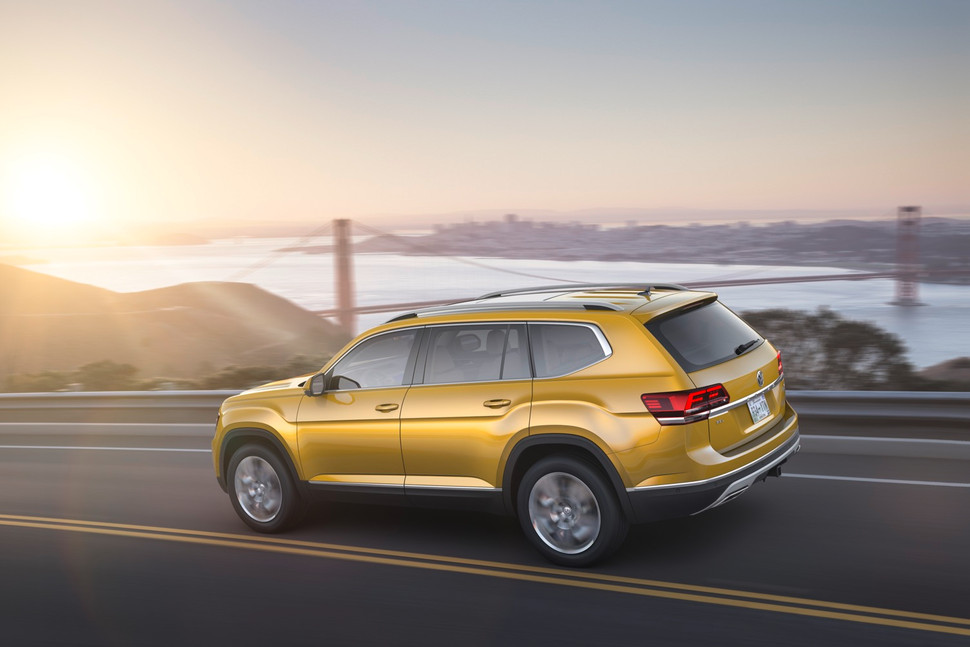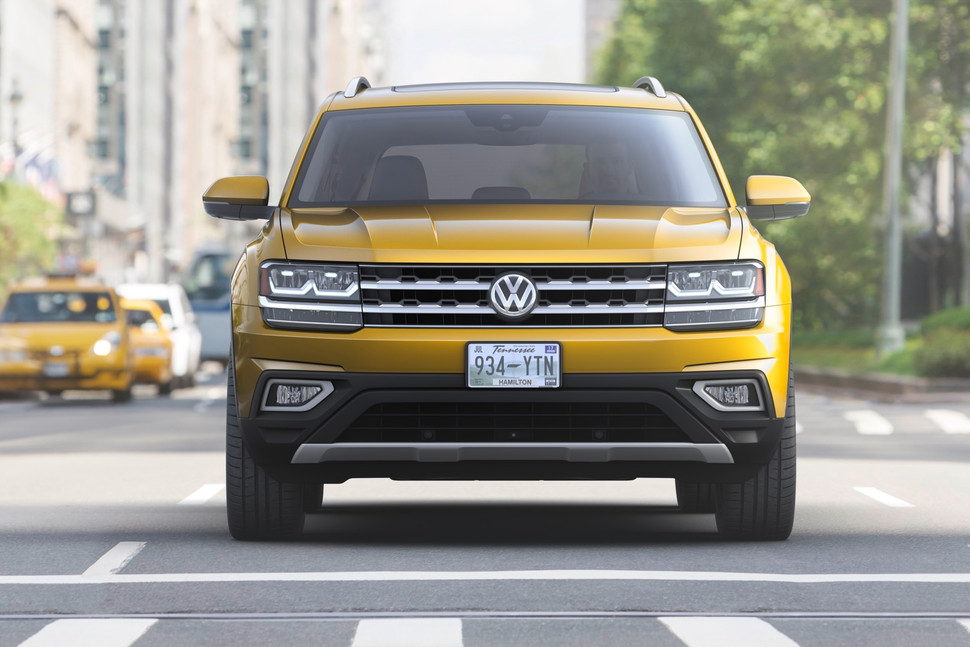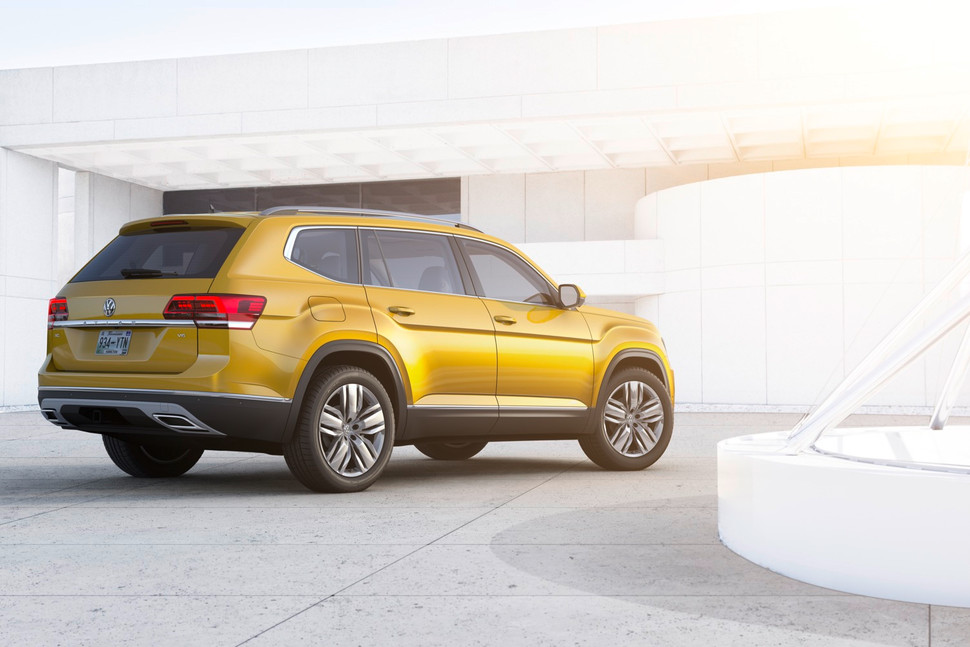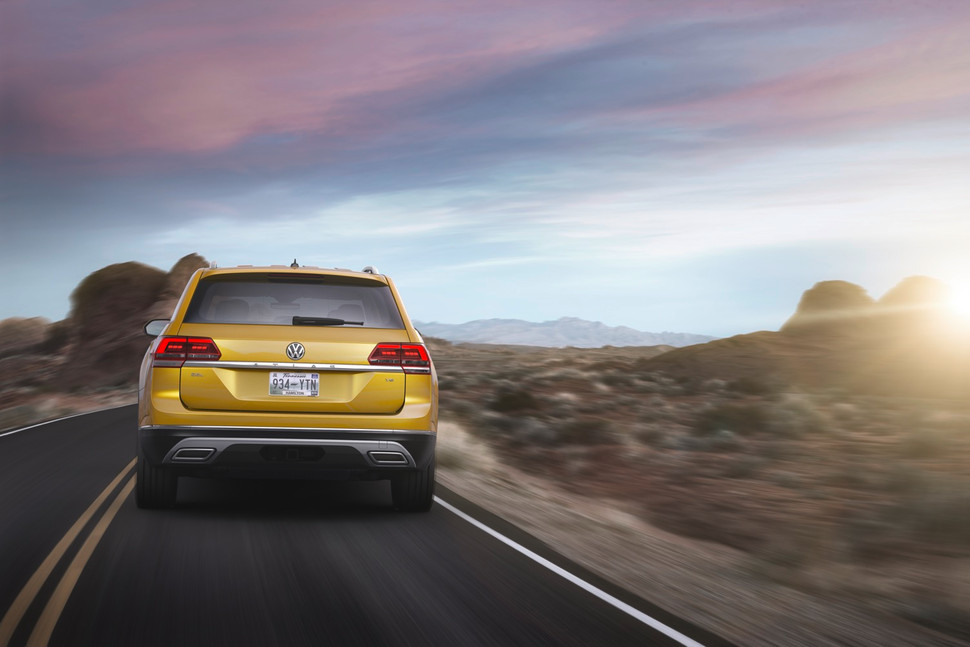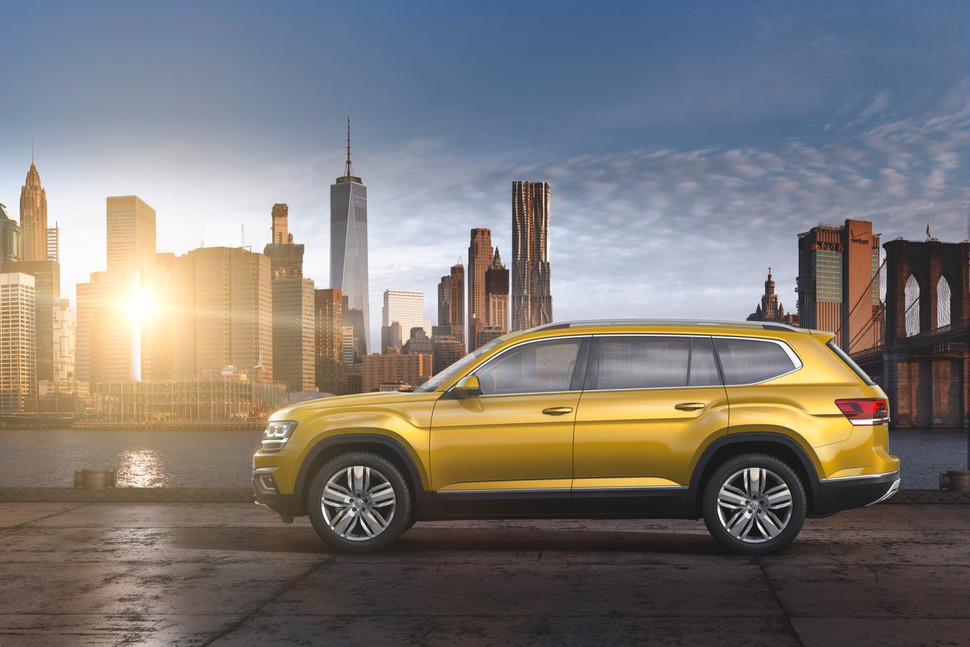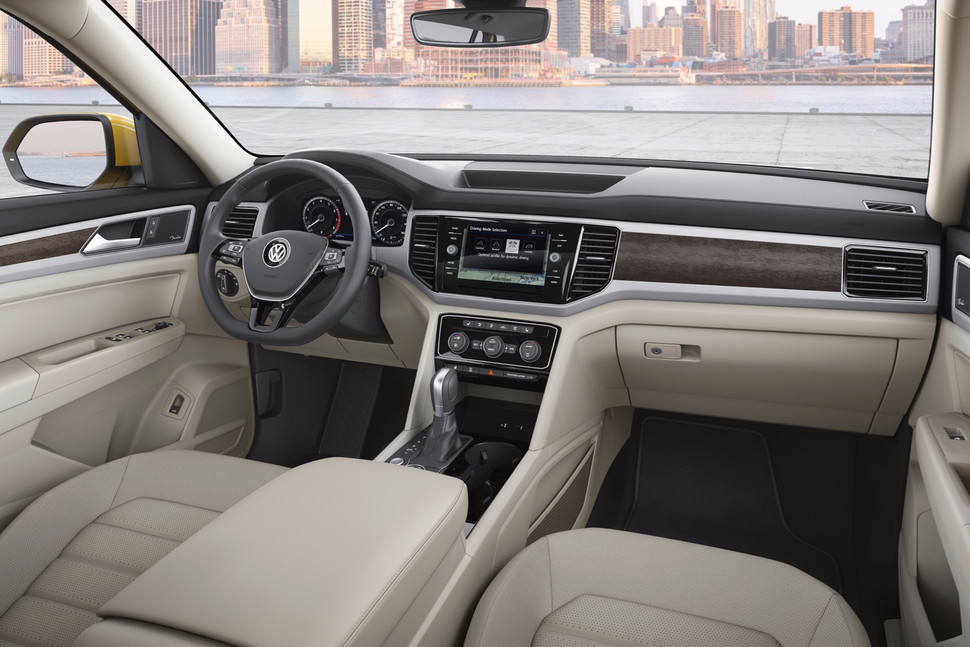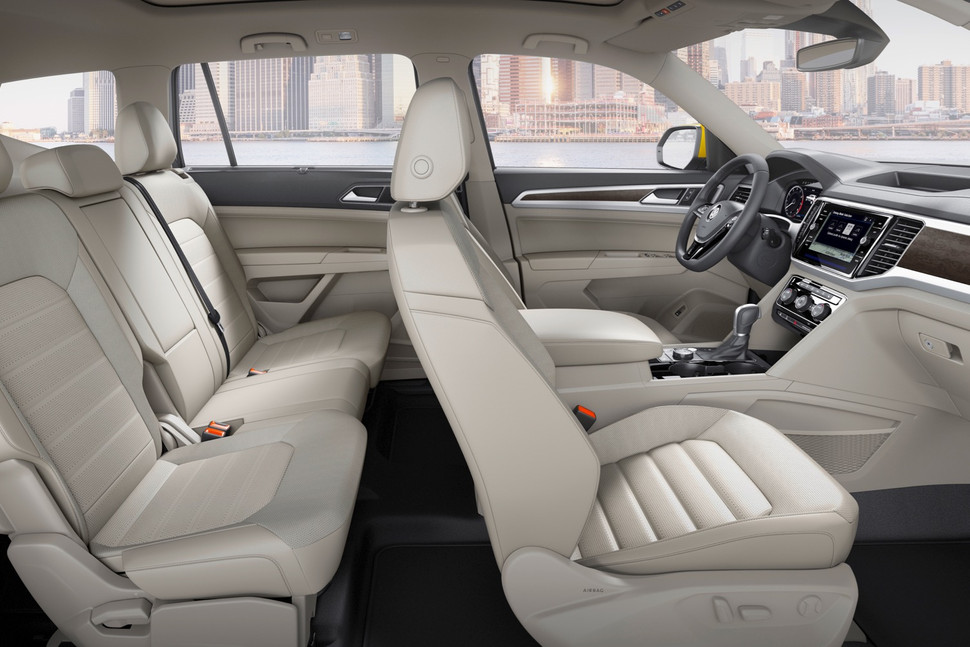With seating for seven adults, the 2018 Volkswagen Atlas is aimed squarely at full-size crossovers, which continue to sell at massive volume. The German automaker hopes Americans will rally behind its halo model and put Dieselgate in their rearview mirrors.
When it goes on sale next year, the Atlas will be the largest VW model sold in the the states, despite sharing a platform with pint-sized cars like the Golf and Audi A3. Competitors for the Atlas will include Ford’s Explorer, Honda’s Pilot, Toyota’s Highlander, and Nissan’s Pathfinder.
Styling is on the modest, muscular end of the spectrum. Volkswagen gave the Atlas squared shoulders to indicate durability, but the overall aesthetic is almost boring. Standard features include LED headlights and DRL (daytime running lights) to light up the night. Inside, Apple CarPlay and Android Auto are paired with VW’s latest MIB infotainment system and a brand new Volkswagen Digital Cockpit driver display (just like Audi’s Virtual Cockpit). A 12-speaker Fender audio system is also available, as is driver assistance tech like adaptive cruise control, lane departure warning, park assist, emergency braking assist, and more.
Powering the 2018 Atlas is a 2.0-liter turbocharged four-cylinder serving up 228hp. A compact V6 with 280hp is available for a bit more coin, as is an all-wheel drivetrain (FWD is standard). Whichever engine you choose, VW includes an eight-speed automatic gearbox.
Not only is the Atlas made for the American market, it’s built here. All vehicles will be produced at VW’s Chattanooga, Tennessee plant (where the Passat is assembled). The facility is fresh off a $900 million upgrade and will be ready for the Atlas come Spring 2017.
